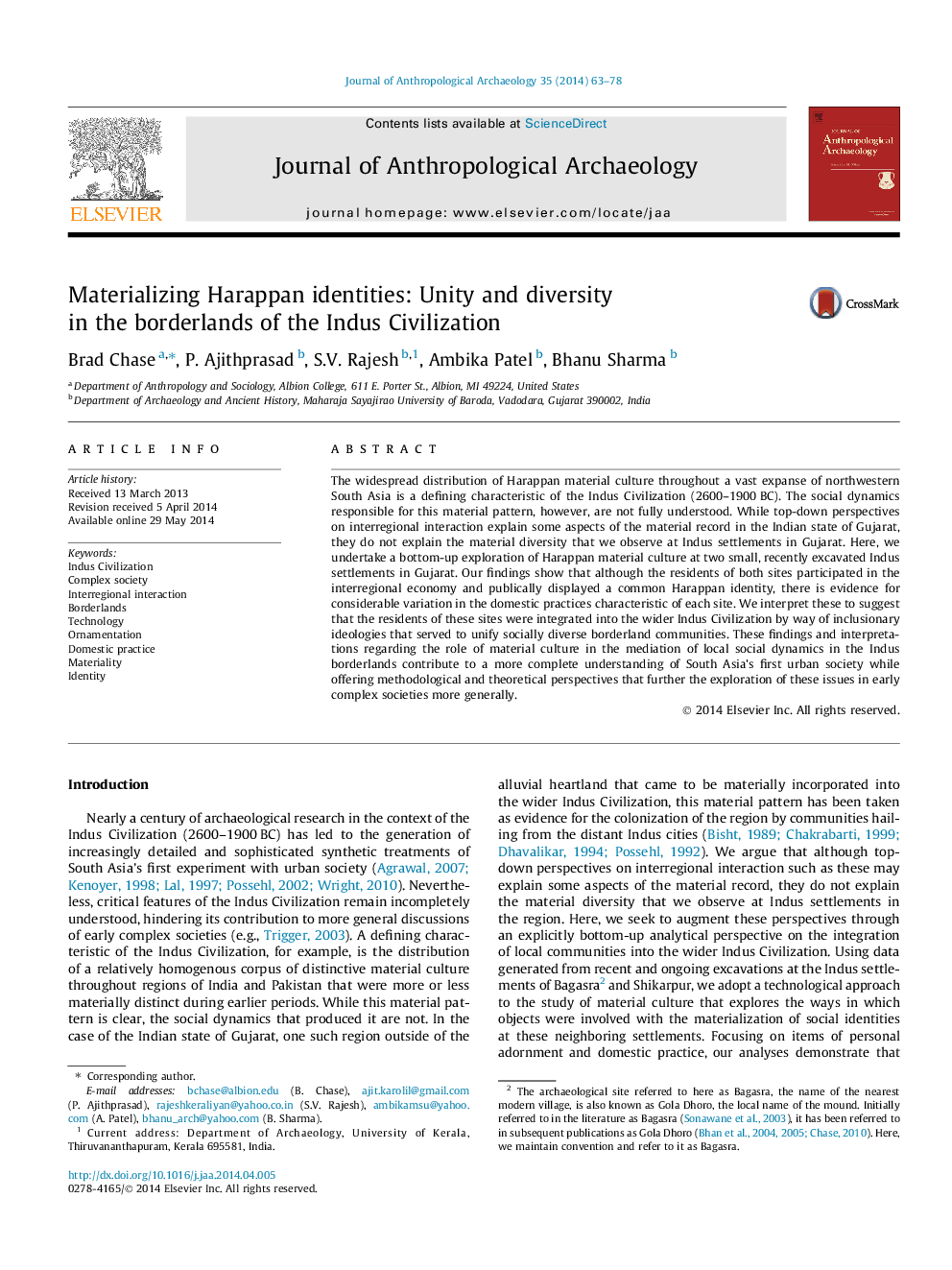| کد مقاله | کد نشریه | سال انتشار | مقاله انگلیسی | نسخه تمام متن |
|---|---|---|---|---|
| 1034956 | 1483855 | 2014 | 16 صفحه PDF | دانلود رایگان |
• We compare material culture from two small settlements of the Indus Civilization.
• Residents at both sites obtained, produced, and used typically Harappan goods.
• The residents of both sites publically communicated a common Harappan identity.
• Variation in domestic practices demonstrates considerable social diversity.
• Inclusionary ideologies served to unify diverse borderland communities.
The widespread distribution of Harappan material culture throughout a vast expanse of northwestern South Asia is a defining characteristic of the Indus Civilization (2600–1900 BC). The social dynamics responsible for this material pattern, however, are not fully understood. While top-down perspectives on interregional interaction explain some aspects of the material record in the Indian state of Gujarat, they do not explain the material diversity that we observe at Indus settlements in Gujarat. Here, we undertake a bottom-up exploration of Harappan material culture at two small, recently excavated Indus settlements in Gujarat. Our findings show that although the residents of both sites participated in the interregional economy and publically displayed a common Harappan identity, there is evidence for considerable variation in the domestic practices characteristic of each site. We interpret these to suggest that the residents of these sites were integrated into the wider Indus Civilization by way of inclusionary ideologies that served to unify socially diverse borderland communities. These findings and interpretations regarding the role of material culture in the mediation of local social dynamics in the Indus borderlands contribute to a more complete understanding of South Asia’s first urban society while offering methodological and theoretical perspectives that further the exploration of these issues in early complex societies more generally.
Journal: Journal of Anthropological Archaeology - Volume 35, September 2014, Pages 63–78
